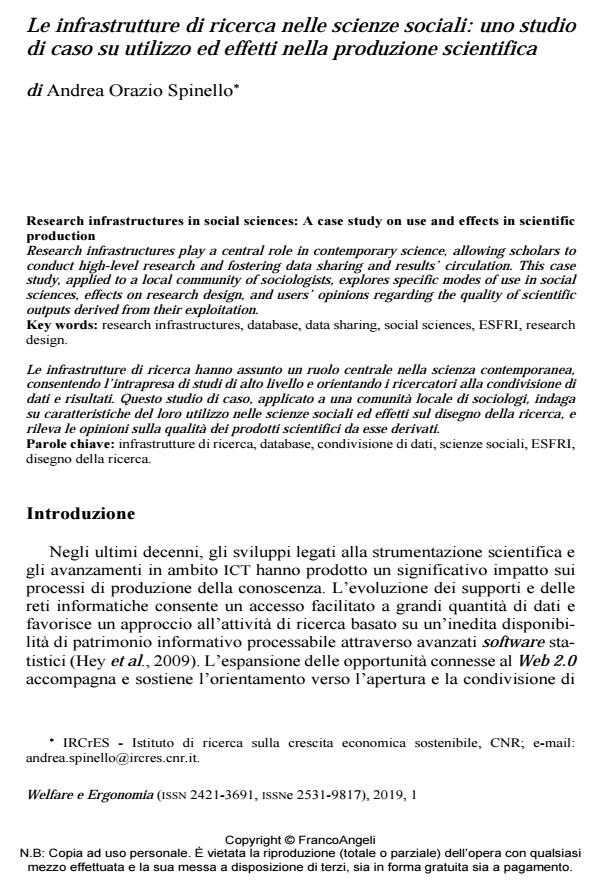Research infrastructures in social sciences: A case study on use and effects in scientific production
Journal title WELFARE E ERGONOMIA
Author/s Andrea Orazio Spinello
Publishing Year 2020 Issue 2019/1
Language Italian Pages 12 P. 67-78 File size 183 KB
DOI 10.3280/WE2019-001007
DOI is like a bar code for intellectual property: to have more infomation
click here
Below, you can see the article first page
If you want to buy this article in PDF format, you can do it, following the instructions to buy download credits

FrancoAngeli is member of Publishers International Linking Association, Inc (PILA), a not-for-profit association which run the CrossRef service enabling links to and from online scholarly content.
Research infrastructures play a central role in contemporary science, allowing scholars to conduct high-level research and fostering data sharing and results’ circulation. This case study, applied to a local community of sociologists, explores specific modes of use in social sciences, effects on research design, and users’ opinions regarding the quality of scientific outputs derived from their exploitation.
Keywords: Research infrastructures, database, data sharing, social sciences, ESFRI, research design.
Andrea Orazio Spinello, Le infrastrutture di ricerca nelle scienze sociali: uno studio di caso su utilizzo ed effetti nella produzione scientifica in "WELFARE E ERGONOMIA" 1/2019, pp 67-78, DOI: 10.3280/WE2019-001007